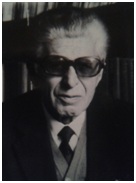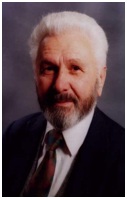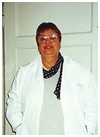About Albania
Albania is a small, mountainous country in the Balkan Peninsula, with a long Adriatic and Ionian coastline. It has a total area of 28,748 km2 and shares a 186 km border with Montenegro to the northwest, a 112 km border with Kosovo to the northeast, a 181 km border with Macedonia to the north and east, and a 212 km border with Greece to the south and southeast.
The population in Albania on January 1st 2015 was 2,893,005 habitants. The average age of the population is 35 years, with an annual number of births 35,760. The total number of counties is 12, with 61 municipals. The county of Tirana is the one with the major number of habitants, a total of 800.986, followed by the county of Fier with 315,012 habitants and Elbasan with 301,397 habitants.Every municipality has its own hospital, and dermatology is available in most of them. The University Hospital “Mother Teresa” in Tirana, is the one that offers the most specialized treatment regarding every disease around the whole country.
History of Dermatology in Albania
The first data about skin diseases and their treatment in the Albanian territory arise from the time of the antiquity. From many archeological objects discovered, there are several data about medical instruments used at that time, including objects used in cosmetics and dermatology. There are data about several places used to isolate and treat different infectious diseases and mineral baths. The first data about skin diseases and their treatment from the Illyrians is described from Roman authors. Pliny the Elder narrates that the Illyrians were able to treat scabies and the postpartum ragadiform eczema in females with a mixture of betum of Apollonia and pine resins (pesasfalton). In the second half of the first century AD, Dr. Philonides of Durres wrote in his notes of 45 volumes also about unguents, scabies and the pharmacology. All of his notes were used for several years and improved the regional medicine. It is proved by sufficient data that several medications used in the ancient Rome have Illyrian origin, for e.g. the use of Althaea leaves to treat inflammation and raki to disinfect wounds. Very ancient is also the use of mineral baths, and the extract of boiled snake to treat leprosy.This has also been used from the time of Arethae. In the medieval period the ancient medicine that was practiced at that time, did not go further, and mainly because of the major changes that affected the region at that time, it empirical medicine was the prevalent type of treatment. After the Ottoman conquest around the end of the XV century, the data about treatment of skin diseases are scarce, but what is worth mentioning are the medications used, like minerals and extracted oils from animals and plants.The empirics could treat several diseases like eczema, alopecia, favus, burns, gonorrhea, syphilis etc. Physicians at the time treated scabies with unguents and sulfuric mineral water. Cosmetics played an important role for the time, and this is shown from the large amount of cosmetic tools discovered. The empirics knew how to use suggestive methods to treat the juvenile warts. They knew how to use prophylactic methods to protect from leprosy, syphilis etc.; these diseases were considered to be of “bad origin”.
The medical institutions in the medieval period, were not available throughout most of the Balkans; in Albania the first qualified medical service was offered at the beginning of XIX century, mainly from foreign doctors.
The first military hospital in Albania was built up in Scutari at 1831; for the dermatologic and sexually transmitted diseases, there was, as an appendix of Scutari military hospital, the dermatologic and venereologic hospital in Bahcallek, with a capacity of 27 beds. In 1889 the first civilian hospital in Scutari was established and from their annual reports it is apparent that the dermato-venereal diseases were treated by the general physicians. In 1901, by free initiative of Albanian doctors (Dr. Ata Libohova), an anti-venereal hospital in Durreswas created to treat endemic syphilis; the hospital was functioning for several years.
The activity of dermatology and venereology specialty in Albania starts in the years of Albanian Kingdom around 1920. From the historical data available up to now, the first Albanian dermatologist Dr. YmerNishani, offered his service in the civilian hospital in Tirana for a few years (1920) and then transferred to Durres (1921-1924).
On September 1921, according to the data found regarding of an official communication between the Ministry Council and the General Directory of Health, is reported the arrival of two foreign doctors, French and Austrian, specialized in the treatment of syphilis’s.
In 1930, the General Directory of Health, Tirana, issued a communication for all the hospitals around the country, where it emphasized the necessity for the treatment of venereal diseases. In Tirana, this duty had to be completed from the Ambulance of the General Hospital, at that time called “Bruno Musolini”. The completion of the construction of the new hospital of Tirana in 1932 created the opportunity to have an entire ward of skin diseases with 20 beds. Leprosy patients were hospitalized in the ward XVII. The first doctor to be the head of this department was Dr. Stefan Pano. In the same year, Dr. KadriKёrçiku completed his training for dermatology and venereology (the residency was done in Graz, Austria).At first he was in charge of the direction of the Venereal satellite clinics in Tirana, Durres and Kruja.
The most famous Albanian figures playing important roles in novel dermatology and dermatopatholgy
Prof. KadriKёrçiku
Prof. KadriKёrçiku was born in Tirana in 1907. After the elementary and the high school in the city where he was born, he completed the university studies in Grac, Austria. He completed the residency for dermatology and venereology in the University of Vienna. He came back to Albania in 1934 with professional training of European level. Prof. Kёrçiku is one of the main contributors in building up Albanian medicine and modern dermatology.
A very well prepared intellectual, he left to his descendents a masterpiece of the Albanian medical history. Prof. KadriKёrciku had been the head of the Dermatology and Venereolgy Clinic, with the creation of the Medical University of Tirana in 1957 and after, he was the head of the Dermatology and Venereolgycatheder, created in 1960. Prof. KadriKёrciku gave to Albanian medicine a great help as a professor in preparing the new and highly instructed doctors in dermatology. Great efforts he invested during his whole career in treating syphilis in Albania, by diagnosing and treating every single case in different localities, in Tirana, Durres, Kruja and Mat by himself. Another proof of all his great works are the enormous articles published regarding this disease in most of the journals of medicine of those years, such as: the history of syphilis, spreading of this disease, syphilis in Durres etc. With similar commitment he invested all of his energy in treating and diagnosing most of the dermatological diseases that were endemic at that time (such as leprosy, favus) all around the country.His considerable publications are in local and foreign journals of medicine. During all of his life he gave to Albanian dermatology and venereology sevice all his energy, and also a great inheritance, the textbook of Skin Diseases (Dermatology and Venereology). This textbook was the first one in Albanian language, with a great value for students and most of all for the new doctors that had to become the new dermato-venereologists in Albania. It was written with such a high perfection for that time that makes it valuable also in our days. Prof. Kёrciku left behind the example of an enormously hardworking physician and a brilliant scientist. For this and all of his merits, the Dermatology and Venereology clinic was called “Prof. KadriKёrciku” in the year 2002.
On 1939, Dr. ShyqyriBasha joined this ward (specialized in Bologna, Italy).
Dr. ShyqyriBasha(Figure 1)

Dr. ShyqyriBasha was born in Tirana in 1911. He started elementary school in Tirana, followed by the high school in the International College Monte-Mario in Italy on the years 1923-1927 with excellent results. In 1936 he was graduated for Medicine and Surgery in the University of Rome. He worked as a doctor in the Military Hospital during the years 1939-1940. He completed his specialization for dermosifilopathy and venereology in Bologna and in the year 1942 he started to work as a dermatologist in the Civil Hospital in Tirana.
During the years 1946-1950 he worked as the director of the Hospital of Berat. From 1953 until he retired he worked in the clinic of Dermatology in Tirana. Since 1960 he was the leading professor for the new physicians that started the residency in dermatology, with highly qualified treatment and diagnostic procedures. He is the co-author of the “Dermatology Textbook” and of many other scientific articles and publications in the Albanian and foreign journals. He had perfect knowledge of foreign languages like Italian, French, German, English, Russian and Latin. From the years 1948 until the end of his life, he was dedicated to the war against syphilis in all the cities around Albania, with a very strong commitment in diagnosing, treating and preventing the disease. He summarized all his work in a textbook called “Syphilis in Albania“, which is left yet unpublished. He died in July, 30 of 1995. He has always been characterized of being a very noble person, with a very special love for the patient and good understanding with his colleges, a very good will of always learning and teaching others.
After the year 1946, a separate ward was created only for dermatology that in two to three years had a capacity of 120 beds, due to the medical conditions of that time in Albania. A very important part of this ward was the treatment of venereal diseases, diagnostic, treatment and prevention of syphilis, gonorrhea and dermatomycosis. For the treatment of children with favus, there was a special ward dedicated to that, direct from the head of dermatology and venereology service, Prof. KadriKerciku, and followed by Dr. M. Caridha.
On 1948 a very high number of children affected from favuswere reported in all the hospitals around Albania and treatment of this diseasewas started. This played a very important role at that time. In the same year, the Ministry of health designed a detailed working plan for the identification and the treatment of the patients with syphilis (treatment protocols, pharmaceutical compositions) according to the stages of the disease: primary, secondary and tertiary, and also congenital syphilis. The pharmaceuticals preparations first used were Bismuth, Neorsfenimina, Neosalvarsan, PotasiumJodine.
The treatment of scabies in the year 1948 was done with Vleminoks, a medication that was prepared from the pharmacist. In case of severe itching, olive oil was commonly applied on the body areas.
In 1952 the Medical Institutionwas created with 30 students from all over the country. In these circumstances arises the necessity to teach dermatology to the new doctors.Therefore in 1956 the Dermatology Clinicwas created and included in the cathedra of internal diseases. This clinic was directed by Doc. KASeropjan (Russian), a resident of Albania with many other foreign doctors of different specialties. Well-known professors at that time in Dermatology were K Kёrciku, MCaridha, Dr. K Miho, Dr. ShBasha. Later, other doctors and well known professors offered their huge contributions in teaching the new generation: Dr. DragoVojushevic, Dr. KocoStamo, Dr. LiriCeli, Dr. VioletaGjino, Dr. ManthoNakuçi, Dr. LiriKasa, Dr. FabiolaNdoni, Dr. ErmiraVasili (Themelko), Dr. EntelaShkodrani, Dr. Eva Jorgaqi.
Together with the clinic of dermatology were available also a Mycological Laboratory, a Clinical Laboratory and a Serologic Lab. The systematic screening and careful treatment of leprosy in the new leprosarium (1960) resulted in 80% of the patients being cured.
The professors of that time were: M. Caridha, M. Nakuçi and part time professors were: ShBasha and LKumani. In the year 1962 the Dermatology clinic was divided off from that of internal diseases and started to work as a separate one under the lead of Dr. KadriKёrçiku.
In 1971 the head of the Department was assigned to Dr. Androkli Miho but he kept this duty only for one year because of his assignment as vice Minister of Health.
Androkli Miho was born in Gjirokastra on 1926. After the war, he graduated from medical school and started to work as a doctor in the Military Hospital.Until 1971, he worked as vice director of the clinical hospital nr.2. He was assigned the duty of the Head of the dermatology cathedra in the Faculty of Medicine, where his great ability in health organization and of developing further the dermatology service in Albaniawas easily noticeable. Dr. Kleo was assigned the duty of vice Minister of Health, a position that he fulfilled with great responsibility and commitment until the last days of his life on 15-12-1977.
In 1972 the duty of the Head of the Dermatology Department and Dermatology cathedra was assigned to Dr. ManthoNakuçi, position that he kept until 1993.
ManthoNakuçi(Figure 2)

ManthoNakuçi was born in Kosinë, Përmet on 8th of Ferbruary1932. He finished elementary school in the city of Përmet. After that he started high school in the Military school “Skanderbeg” in Tirana, where he was noticed for his brilliant results. The program of the high school offered from the military school “Skanderbeg” at that time was incomplete, lasting only for one year.For that reason, Dr. Nakuci completed also the second yearduring the summer and transferred his studies to the High school “QemalStafa” of Tirana, with brilliant results. He studied in Tirana, Faculty of Medicine, and in the year 1957 he graduated in Medicine. He worked as a general physician from 1957 until 1963 in Tepelene and later in the city where he was born, Permet. He completed his training in Dermatology in the year 1963 and started to work in Durres until 1968, where he discovered the first case of leprosy in his career and with enormous commitment he started his war against this disease in Albania, a war that definitely he won. In the year 1972 he started a whole campaign to eradicate this disease, to treat every single patient with leprosy and also by implementing new treatment protocols. In the year 1968 he was assigned the duty of professor in the University of Tirana. In the years 1972-1993 he was the Head of Dermatology Department. He was the foundator and the President of Albanian Dermatologist Association in the years 1991-1993.
After 1993, the head of the dermatology department was Dr. FabiolaNdoni, a position that she held until 2008.
Dr. FabiolaNdoni(Figure 3)

Dr. FabiolaNdoniwas born in Tirana on29.10.1949. She completed High school andUniversity studies in Tirana. She graduated from the Medical Faculty of Tiranain the year 1972. After her graduation, she started to work as a dermatologist in the policlinic of Tirana. In the year 1983 she was assigned the duty of Dermatology assistant in the Medical Faculty.She received the title of Medical Doctor in the year 1990 in the Medical Faculty of Tirana. In the same year she was assigned the duty of the Head of Dermatology Department, a position that she held until the day she died, on 18.12.2008. On December 1994 she gained the title “Prof Ass” from the Medical Faculty of Tirana and the title “Prof” in April 2007.She offered her great contribution in raising the professional level of the new dermatologists and with an enormous commitment she did everything possible to improve the dermatology and venereology service.She was an active member in national and international dermatologic activities. She presented and published many articles, in local and international medical journals and congress.She published 4 articles in international medical journals and 7 in the local ones. The textbooks that she offered to medical students were: “Dermatology and venereology” for medical students “Venereal and skin diseases”, “Clinical dermatology and venereology”- translation, “Skin diseases from chemicals”- Monograph.She was the head of the Albanian Dermatology and Venereology Association.She was a member of the revision board of “ActaDermatovenerologicaAlbanica”.She was a member of the board of “Medical Science Journal” Tirana. She was a member of the Europian Academy of Dermatology and Venerology (EADV).She dies on 18.12.2008 leaving a huge contributes in the Albanian dermatology and venerology.
ErmiraVasili(Figure 4)

ErmiraVasiliwas born inTirana on 17.05.1957. She completed the basic of her educational training in Tirana, and finished high school in 1976. She graduated from the Faculty of Medicine of Tirana, in the years 1976-1982. After that, she trained in general pathology in the years 1982-1984 and in dermatology and venereology in the year 1984-1985 in the “Mother Teresa” University Hospital, Tirana. After graduation she started working at the “Mother Teresa” University Hospital in the Dermatology and Venereology Clinic, hospital nr.1, Tirana. She acquired the title “Medical Doctor” in 1966 in the Faculty of Medicine, Tirana, with the study “Psoriasis Vulgaris in Albania, Clinical and epidemiological study”. She acquired the title “Prof Asc” on January 2005 and the grade “Professor” in December 2014 in the Medical University, Tirana.
Her great ability in teaching the young doctors makes her one of the most prominent Professors in Albania, an ability that she develops together with her enormous clinical skills in Dermatology. At the moment she is a Professor of Dermatology in the Faculty of Medicine, Tirana University and also the Head of Dermatology Department in the University Hospital “Mother Teresa” in Tirana.She has been a member of many activities and presentations related to dermatology and venereology, in Albania and abroad.She is the author of five publications in foreign Medical Journals and of over fifty publications in Albanian Medical Journals.She is the author of the monograph “Psoriasis” in the year 2002.She is the author of two medical textbooks “Dermatology and Venereology” for the students of the Faculty of Medicine and “Clinical Dermatology” for the students of the faculty of Dental Medicine, Tirana.She holds the position of the Chair of Albanian Dermatology and Venereology Association.She is a member of the redaction council of “ActaDermato-VenerologicaAlbanica” and a board member of “Medical Science Journal” Tirana.She is a member of European Academy of Dermatology and Venereology (EADV).
In 1974 the Dermatology Cathedra joined the one of Infectious Diseases and Hygiene, with the Chair of the Cathedra Prof. KristoPano. From the beginning of the clinical activity and organization, lectures have been given by the head of the department, and very rarely by the assistants. For the practical training, all the staff was involved. The residency for Dermatology specialization was 1 year long, that included the work in the clinic and the finalization of the training with an exam, taken from a specialized board. Further qualifications were the degree of “Medical Doctor”.
Now, the residency in Dermatology is 3 years long. The doctors that were assigned to teach later: in the year 1981 Dr. FabiolaNdoni, in the year 1993 Dr. ErmiraVasili,and from the year 2011 Dr. Monika Fida, from the year 2002 part time educator prof Ass. EntelaShkodrani. At the moment the Department of Dermatology and Venereology in the “Mother Teresa” University Hospital, is the only specialized structure for the treatment of infective skin diseases, with a capacity of 30 beds.
Teaching activity
Literature
At the beginning, for the students have been used foreign medical books like in Russian, Italian or German.
Later were available medical textbooks in Albanian, some of those are listed below:
- “Dermatology and Venereology” author Dr. KadriKёrçiku (1973);
- “Textbook of skin diseases” author Dr. M. Caridha for the students of Dental Medicine (1974). The book was also completed by a practicum of these diseases;
- In 1992 was published the textbook “Skin Diseases” author Dr. ManthoNakuçi, Dr. Fabiola
- Ndoni.
- In 2009 the “Dermatology and Venerology” textbook for the medical students was published by Prof. ErmiraVasili, Ass. Prof. EntelaShkodrani.
- In 2011 the “Clinical Dermatology” textbook was published for the students of dentistry by Prof. ErmiraVasili.
The list of text books published from the Dermatology Department was quite long. Have been published several monographs such as:
2021 Copyright OAT. All rights reserv
- Health Development in Scutari in the centuries XVII-XX author Dr. KadriKёrçiku, 1962.
- Syphilis in the area of Berat, author Dr. Sh. Basha, 1973.
- Dermatomycosis author Dr. ManthoNakuçi, 1974.
- Dermatomycosis in the area of Tirana, author Dr. M. Caridha, 1974.
- Atlas of skin diseases, author Dr. ManthoNakuçi, 1978.
- The “StruggleAgainstLeprosy” in Albania, author Dr. ManthoNakuçi, 2001.
There have been published 4 editions of Dermatologic Studies, a summary of scientific articles and workshops from doctors and medical students in the years 1974-1988, under the revision of Dr. ManthoNakuci.
-Have published over 100 articles in Albanian Medical Journals and 17 articles in foreign medical journals and medical forums abroad.
The scientific research from the Albanian Dermatologists
The dermatology clinic published many scientific articles related to actual diseases, being one of the contributors in Albanian medicine and its history:
- There have been serial studies related to syphilis in Albania, efforts that resulted in eradication of syphilis in our country (1971). In this war that lasted for many years, a very special gratitude goes to ka Prof. KadriKёrçiku, Dr. ShyqyriBasha and to the doctors from the other cities like Dr. I. Korça in Peshkopi, Dr. A. Anagnosti in Durrёs, Dr. Thomo in Korça etc.
- Several studies have that were related to dermatomycosis been completed from the doctors and the professors of dermatology. A great contribute in that was offered by Dr. ManthoNakuçi, Dr. M. Caridha. In the year 1988, has been published the summary of all this work by all the Albanian dermatologists, under the revision of Dr. M. Nakucit.
- In Albania have been done several studies about leprosy. This great work was started with a great commitment by Prof. KadriKёrçiku until the year 1972. For this reason, the Ministry of health created a special team headed by Dr. ManthoNakuci and the participation of Dr. J. Adhami, Dr. V Mazreku, Dr. N Papajani, Dr. M Caridha, Dr. JÇapari and all the local epidemiologists. The dermatology clinic fought with this disease for 35 years and in the year 1991 was discovered the very last case of leprosy in all the Albanian territory.
- Today is already published the book: “The battle against leprosy in Albania”, author Dr. ManthoNakuci. The book has been published in English and Albanian language from the Albanian Academy of Science in the year 2001.
- Studies about professional dermatosis due to chemical components, author Prof. FabiolaNdoni.
- The dermatology clinic prepared the contemporaneous protocols for the treatment of lymphomas, leishmaniose etc.
- Epidemiologic studies related to Psoriasis Vulgaris, author Prof. ErmiraVasili.
- Epidemiologic studies related to Atopic Ecsema, author Asc.Prof. EntelaShkodrani.
- Epidemiologic – incidence study in the area of Mat, author Dr. B. Pёrnaska.
Reference
- http://www.pubfacts.com/author/Ermira+Vasili
- http://www.pubfacts.com/author/Entela+Shkodrani



